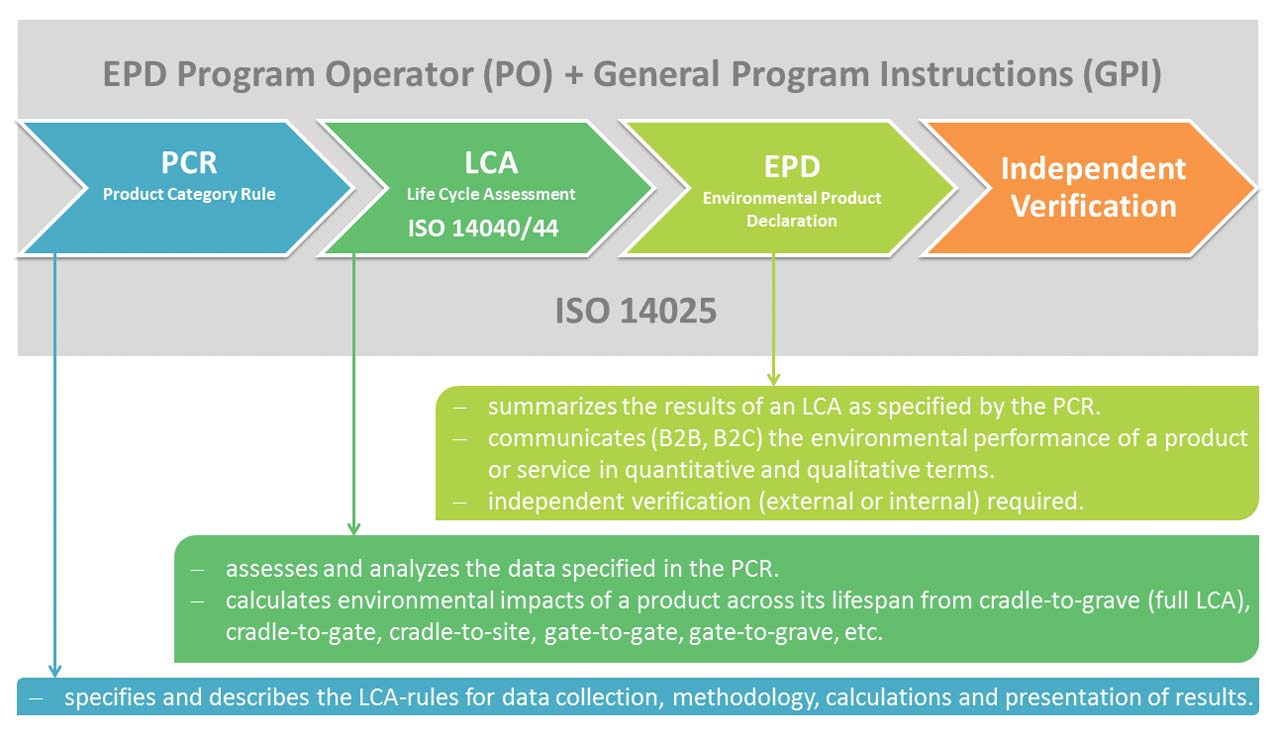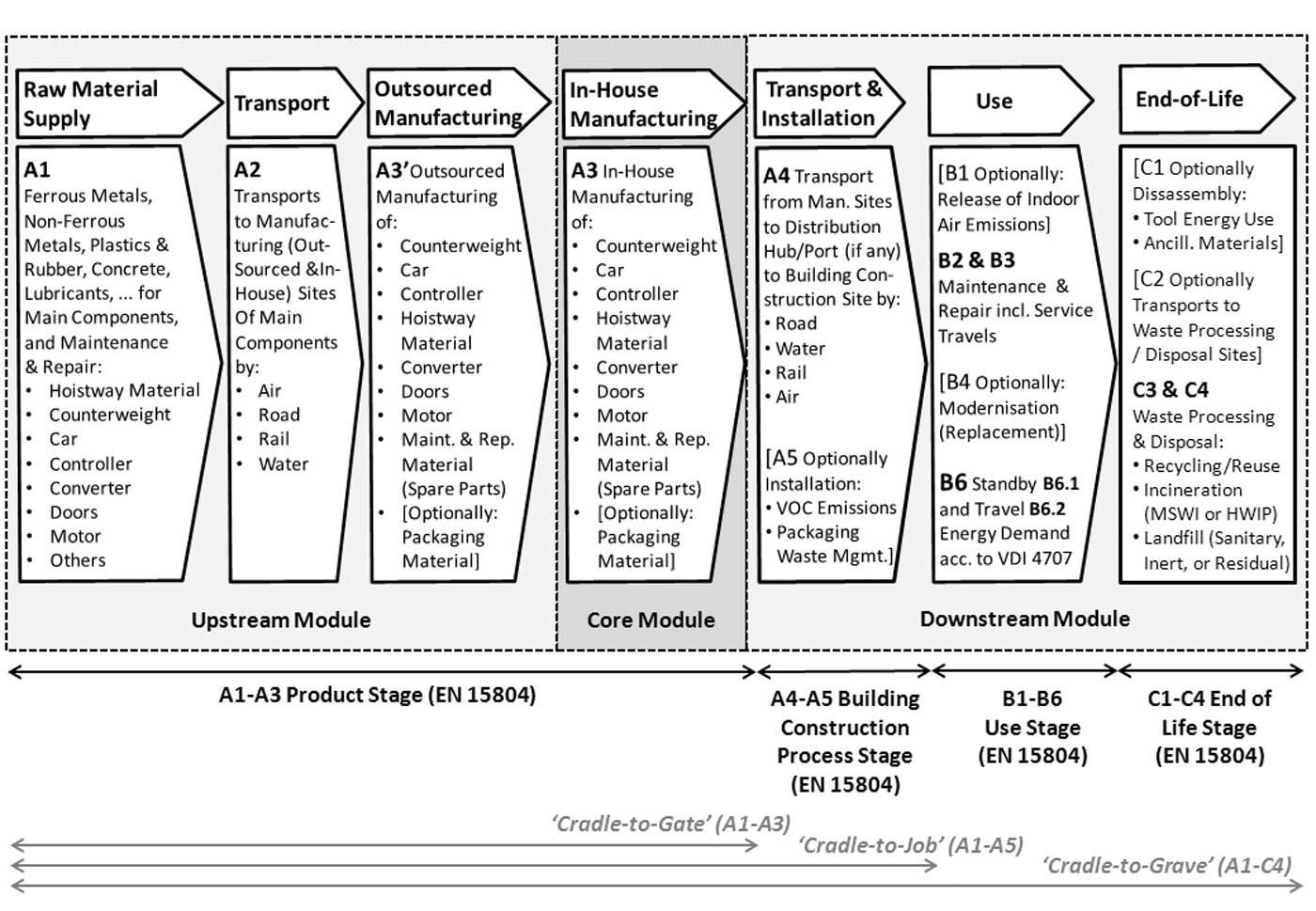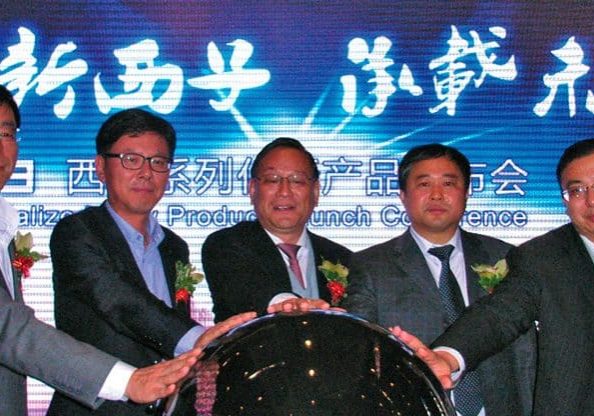“Green” Elevators: Calculating, Quantifying and Reporting
Apr 1, 2014

How to credibly claim and compare the environmental performance of elevators
by Sascha Iqbal and Nikolay Minkov
Strictly speaking, there is no such thing as a “green“ elevator, unless covering your shaft doors and car entrance with green paint and decorating your car interior with some fancy green-colored panels count. Evidently, however, each product and activity has an impact on the environment, which is bigger or smaller when compared with a reference or benchmark. Thus, the question is more about how much “greener” (i.e., “better” in quantitative terms) the overall environmental performance of one elevator is when compared to a competitor’s.
LCAs: Calculating and Quantifying “Green”
The most recognized scientific method around the world to measure “green” is using a lifecycle assessment (LCA). Standardized by ISO 14040[1] and ISO 14044,[2] an LCA allows for a quantified estimate of the environmental performance of each lifecycle stage of a product or service.
Performing an LCA for a rather complex product such as an elevator system and its underlying supply chain is a laborious task, requiring three to 12 months of work from a core team of one to two people skilled in LCA, resulting in lengthy, technical reports with LCA results in greater-than-necessary detail. Not only the LCA project core team, but also numerous departments (R&D, purchasing, marketing, field offices, fleet managers, etc.), manufacturing locations and suppliers are involved. These participants also need to be trained in LCA, briefed about the purpose of the LCA project, informed about what data is needed and told how this data can practically be collected.
Thus, performing a full LCA from “cradle to grave” requires considerable investment of time, skills and financial resources companies may initially feel reluctant to commit to, unless the LCA’s clear value becomes obvious (e.g., when contracts are lost to competitors able to provide better [such as more transparent and quantifiable] environmental performance-related information).
EPDs: Reporting “Green”
Within the context of “green” building rating and certification schemes, such as Leadership in Energy & Environmental Design (LEED®), the Building Research Establishment Environmental Assessment Method (BREEAM®), the German Sustainable Building Council (DGNB®), the French High Quality Environmental Standard (HQETM) and GreenStar, so-called “environmental product declarations” (EPDs), have increasingly gained importance, due to being accepted for (or contributing to) achieving credits. Of particular note are LCAs or EPDs accepted for achieving or contributing to the achievement of one point of the materials and resources credit 2, option 1 under LEED v4 (2013).[3]


EPDs are standardized (in general) according to ISO 14025,[4] where they are officially named “Type III Environmental Declarations,” and for building products (in particular) according to ISO 21930[5] and CEN 15804.[6] The latter is currently the most evolved, widespread and accepted EPD standard related to building products, besides some other national ones (Figure 1).
As opposed to full LCA reports, EPDs summarize LCA results in a more concise, brochure-like form. Thus, several elevator manufacturers have published EPD-like documents for their products.[7-10]
Facilitating Informed “Green” Purchasing Decisions
In practice, elevator EPDs and the respective LCA results contained in them have so far been very difficult or impossible to compare due to differences in functional units, calculation rules, default values, assumptions, background lifecycle inventory data, system boundaries, or applied allocation and cut-off rules. The “functional unit” is defined as a quantified performance of the product for use as a reference unit in an environmental declaration of the lifecycle of a product. Its primary purpose is to provide a reference by which input and output flows (material, energy, waste, emissions, etc.) of the elevator LCA results and any other information are normalized to produce data expressed on a common basis.[6 & 11]
Thus, to genuinely allow and support architects, builders, planners or contractors to make informed “green” purchasing decisions, EPDs should be comparable. Comparable points should be calculated according to the same rules and system boundaries (e.g., similar to national or international accounting standards applied for calculation of balance sheets, or profit and loss statements) and applied consistently. This is where so-called “product category rules” (PCRs) come in.
PCRs: Calculation Rules for “Green”
PCRs define the calculation rules and system boundaries (which lifecycle stages and components to include/exclude from the LCA study) for the underlying LCA, as well as format and content for reporting in an EPD. The existence of a PCR is a prerequisite to elaborate on an EPD, in order to be in conformity with ISO 14025.[4]
First Elevator PCR Development
Development of the first elevator PCR was initiated on May 24, 2013, under the umbrella of The International EPD® System acting as so-called “EPD program operator” (PO), as defined by ISO 14025.[4] The draft developed is based on the requirements of the PO’s so-called “general program instructions” (GPIs),[11] ISO 14025[4] and CEN 15804,[6] including a mandatory independent EPD third-party verification (Figure 2).
The proposed elevator lifecycle model (Figure 3) elaborated during the PCR development process allows for a flexible aggregation of lifecycle stages, if aggregated according to the rules outlined in the GPIs (“core,” “upstream” and “downstream” modules), CEN 15804 (stages A1 to C4) or common building-product LCA syntax (“cradle-to-gate,” “cradle-to-job[site]” and “cradle-to-grave”).
PO: Administrative Framework for “Green”
A PO basically acts as an administrative body of an EPD program: it prepares, maintains and communicates GPIs, maintains publicly available lists and records of PCR documents and EPDs and is required to establish a transparent procedure for PCR review through an open stakeholder consultation (OSC).[4]

Draft PCR Consultations
The OSC of the elevator PCR was launched on Dec 6, 2013, by actively inviting at least four dozen companies, industry associations, industry Internet groups, academics and individuals from around the globe. The main challenges and issues encountered during the PCR development process and addressed so far during the OSC include the following:
- Maintain balance of interests between industry representatives (elevator companies and associations), academia, institutions and independent LCA experts within the PCR development committee and stakeholder groups
- Definition of a meaningful functional unit (per ton-kilometer, per passenger-kilometer and/or per floor)
- Representativeness of proposed default system configurations and parameters (geography, elevator reference service life [RSL], usage intensity/frequency, trips per year, daily travel and standby times, rated load, rated speed, traveling height, number of stops, reeving factor, number of car entrances, etc.)
- Methodological choice for system energy demand (expressed in kWh per year and per-reference service life) calculation: VDI 4707-1,[12] ISO/DIS 25745-2[13] and/or ISO/DIS 25745-2 (ELEVATOR WORLD, September 2013)
- Consideration of component classification and energy demand according to the VDI 4707-2 draft[14]
- Inclusion/exclusion of installation lifecycle phase in/from the so-called “core module”
- Optional inclusion of elevator modernization and expansion of elevator RSL to building RSL (typically 50 years applied for whole-building LCAs) for facilitating integration into whole-building LCAs
- Environmental-impact relevance and inclusion/exclusion in/from system boundaries of ozone-layer-depleting substances (such as potentially used for printed-circuit-board washing or as refrigerant in the air-conditioners of some elevators installed in [sub]tropical climates), packaging, and replacement material for maintenance and repair
- Allocation rules (based on physical relationships, versus based on economic relationships)
- Cutoff rules (1, 5, 10% or more for any environmental-impact category as defined in the PCR)
- Approach for modeling disposal and recycling of elevator components at the end of their lives: so-called “recycled content” or cut-off approach, versus so-called “end of life recycling” or avoided burden approach
- Declaration of hazardous substances (mandatory/optional, level of detail, applicable legislation and geographical scope)
- Representativeness of default scenarios and parameters proposed for modeling end-of-life and transportation stages
- Recommendation of generic background lifecycle inventory databases with respect to consistency, geographical and temporal representativeness, technological equivalence, and natural/technical-systems boundaries
- Definition of optional disclosure of additional (non-LCA/qualitative) environmental information, such as energy-saving features, energy-efficiency labels/ratings, shaft thermal-energy losses, noise levels, recycled content and electromagnetic compatibility

Due to unexpectedly large interest, the OSC was extended until April 11 at goo.gl/6R00Ug, where the draft elevator PCR can also be downloaded. Review and approval of the elevator PCR are scheduled for May 15, and publication is scheduled for June 1 (Figure 4).
References
[1] ISO 14040: 2006 Environmental management – Life cycle assessment – Principles and framework
[2] ISO 14044: 2006 Environmental management – Life cycle assessment – Requirements and guidelines
[3] LEED BD+C: New Construction | v4 Building product disclosure and optimization – environmental product declarations (www.usgbc.org/node/2616376?return=/credits/new-construction/v47material-%26-resources, accessed February 23, 2014)
[4] ISO 14025: 2006 Environmental labels and declarations – Type III environmental declarations – Principles and procedures
[5] ISO 21930: 2007 Sustainability in building construction – Environmental declaration of building products
[6] CEN 15804: 2012 Sustainability of construction works – Environmental product declarations – Core rules for the product category of construction products
[7] MP Lifts MP1310 GO! (www.mplifts.com/portal/c/document_library/get_file?uuid=1e08c15a-80f8-4b14-904e-99e6a71d21b8&groupId=10136, accessed 23-Februrary 23, 2014)
[8] ThyssenKrupp Elevator (www.tkearth.com/downloads/TKES_EPD_Digital_Brochure-Interactive.pdf, accessed February 23, 2014)
[9] KONE MonoSpace® (cdn.kone.com/www.kone.us/Images/kone-monospace-environmental-product-declaration.pdf?v=2, accessed February 23, 2014)
[10] Schindler, Environmental Fact Sheets (www.schindler.com/com/internet/en/about-schindler/corporate-citizenship/product-ecology.html, accessed February 23, 2014)
[11] General Program Instructions (Version 2.01) of the International EPD System
[12] VDI 4707-1: 2009 Lifts – Energy efficiency
[13] ISO/DIS 25745-2 Energy performance of lifts, escalators and moving walks – Part 2: Energy calculation and classification for lifts (elevators)
[14] VDI 4707-2 Draft Lifts – Energy efficiency – Components
Also read: “Green” Escalators: Calculating, Quantifying and Reporting
Get more of Elevator World. Sign up for our free e-newsletter.








